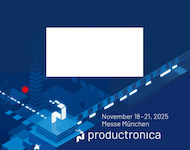
© elmatica (illustration purpose only)
PCB |
New technology gives increase for Flex and Rigid-Flex PCBs
Elmatica sees an increase in the demand for Flex and Rigid-Flex PCBs in the Nordics.
New advanced technology requires flexible circuits to fulfill challenging form-factor requirements, eliminate connectors and improve performance.
- We have during 2016 seen an increase in the demand for Flex and Rigid-Flex circuits in the Nordics. There are several reasons to explain this development. The last manufacturer of Flex and Rigid-Flex in the region closed down a while ago. Manufacturers in EU, USA, China and Asia are now the only viable options. Manufacturers in China has over the last years invested heavily in machines and knowledge to increase their capabilities. Status now, is that one can procure Flex and Rigid-Flex in China, when using the right manufacturer, at a high quality level, says Torben Hajslund, Country Manager Elmatica, Denmark.
- We see that the demand on a global level is increasing, especially within the consumer electronics industry in relation to volume production. With the high quality level from Asia on multilayer Flex and Rigid-Flex, the Flex-circuits are now more attractive in various industries, where Rigid boards with connectors and cables would earlier have been preferred, says CTO of Elmatica, Jørgen Bakke.
Civil aviation, medical, aerospace- and the defence industry are sectors where Elmatica see a particular high growth, however all products for the defence sector naturally fall under compliance regulation and hence they can only be produced in NATO countries or specific approved countries.
- The earlier we are involved in a project, the more challenges we can overcome in relation to optimize the design in relation to cost, assembly, material selection and compliance. We believe in sharing our knowledge, and tailor seminars for our customers to set the standard for how they can design with the optimal technology and reduce challenges. Lately we have seen a significant increase in the demand for seminars regarding Flex and Rigid-Flex technology, says Bakke.
- Another positive aspect with Flex and Rigid-Flex is the reduction of assembly time. For Rigid-Flex, reduced or no use of connectors will also increase reliability. Customers often request a reduction in both costs, time spent in assembly, fewer cables and sockets. This is in many cases solved with Flex and Rigid-Flex boards. We are at the moment consulting on a printed circuit for a partner, a ML8-circuit with flex-connections on two layers. In this project we discuss the total cost reduction of the product in relation to utilizing cables etc. For a waste majority of applications, customers continue to demand smaller, lighter, and more cost-effective products. Then the flexible circuit is a viable option to explore with a competent partner, says Bakke.



